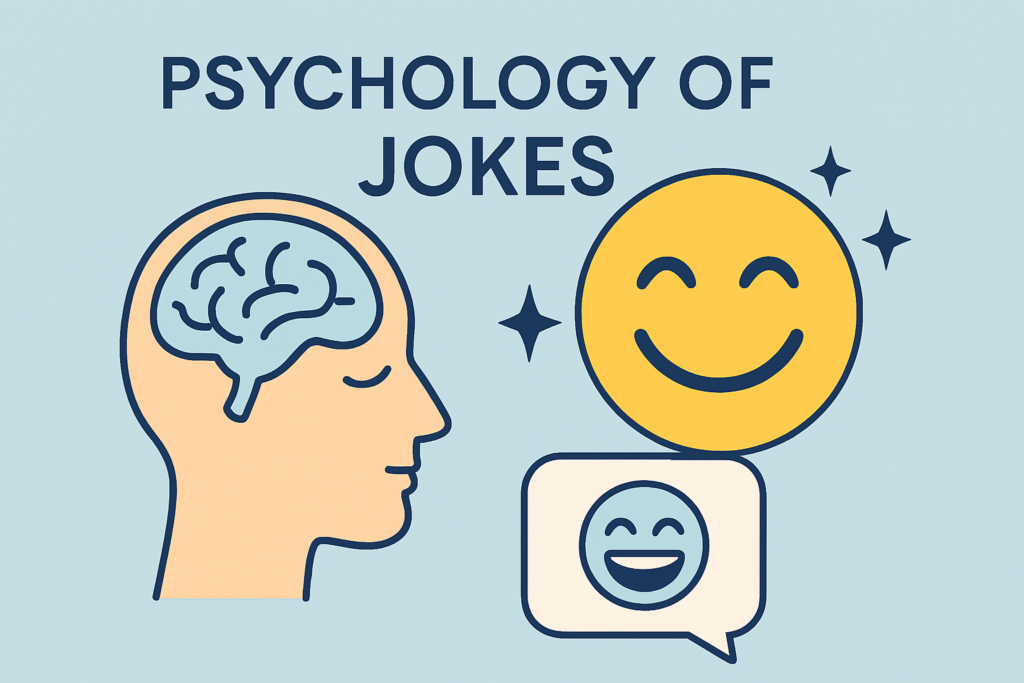
Unlock the Psychology of Jokes: Why We Laugh in 2025
Humor is a universal language, but what makes us laugh? The psychology of jokes dives into the science behind our chuckles, exploring how our brains process funny moments and why certain gags resonate widely. It’s a blend of cognitive twists, emotional sparks, timing, and social ties. In this post, we’ll break down why laughter happens, how different humor styles work, and what joking does for our minds and relationships. Let’s unpack the magic behind every giggle.
Table of Contents
ToggleWhat Drives Laughter?
Laughter isn’t random—it’s a reaction rooted in our mental wiring. The psychology of jokes looks at how we interpret surprises, language, and social cues to find something funny. A punchline that catches us off guard or flips our expectations triggers that joyful burst. It’s less about the words and more about how our brains connect the dots in an unexpected way.
😂 Theories Behind the Laugh
Scientists have a few ideas about why humor clicks:
- Relief Theory: Laughter lets us release tension—like after a close call or an awkward pause.
- Incongruity Theory: We chuckle at surprises, like, “Why don’t scientists trust atoms? They might make up everything.” The twist from science to wordplay is the spark.
- Superiority Theory: Feeling cleverer than the joke’s target—like in slapstick—can tickle us too.
These theories show how laughter ties into our emotions and instincts.
🧩 Styles of Humor Explained
Humor comes in many flavors, each tapping into different mental gears:
- Puns: Wordplay surprises, e.g., “Time flies like an arrow; fruit flies like a banana.”
- Sarcasm: The mismatch of tone and meaning amuses.
- Absurdity: Bizarre scenarios, like a cat driving a car, delight.
- Dark Humor: Helps us laugh at life’s tough bits.
- Dad Jokes: Simple, groan-worthy puns shine here.
- One-Liners: Quick delivery packs a punch.
Your favorite style often mirrors your personality or life experiences.
👥 Humor’s Social Power
Laughter isn’t just personal—it’s a connector. Sharing a joke can:
- Warm up a stiff room.
- Build trust with new faces.
- Ease stress in a group.
- Lift everyone’s mood.
Research highlights that laughing together strengthens bonds, a key piece of the psychology of jokes. See more at Psychology Today.
🧪 How Jokes Light Up the Brain
When you hear a funny line, your brain gets busy:
- Prefrontal Cortex: Figures out the logic.
- Temporal Lobe: Breaks down the words.
- Amygdala: Feels the joy.
- Motor Cortex: Makes you laugh out loud.
It’s a rapid-fire workout that links thought, language, and emotion in seconds.
Timing: The Unsung Hero
A joke’s punch depends on delivery. Too slow, and the surprise fades; too fast, and it’s lost. Great comedians master this pause, letting anticipation build before the payoff lands. It’s a subtle art that turns a decent line into a killer one.
Culture and Context
Humor shifts across borders. Puns thrive where languages bend, while visual gags might rule elsewhere. A joke that kills in one country might flop in another, showing how the psychology of jokes adapts to its audience.
Tips for Your Own Jokes
Want to try it yourself? Keep it simple:
- Start with a setup people relate to.
- Add a twist they won’t see coming.
- Practice the rhythm—timing is everything.
- Test it on friends to tweak it.
📚 External Resources
Dig deeper:
🔗 Related Posts on LolMachine.com
More fun awaits:
🥳 Final Thoughts
The psychology of jokes is a window into why we laugh and connect. It’s not just punchlines—it’s surprise, relief, and shared joy woven into our minds. Whether you love puns or absurd twists, humor’s a tool for coping and bonding. Next time you crack up, you’ll see the brainpower at play. For more laughs, hit up LolMachine.com or try our AI Joke Generator!
